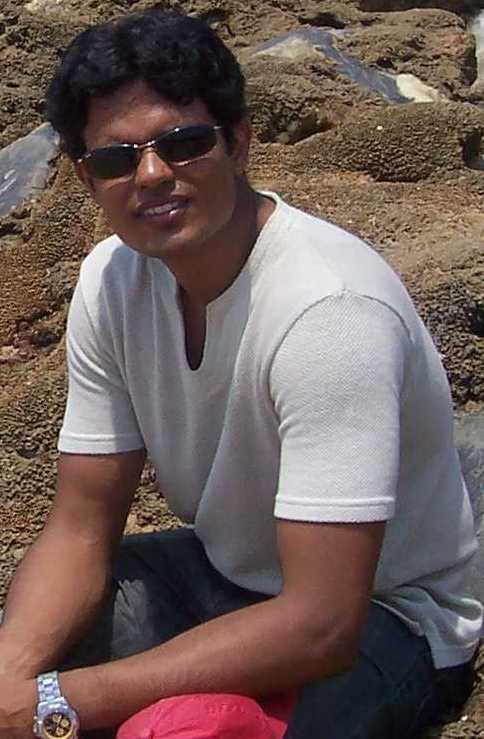It was a beautiful race. I was shooting for an aggressive
216km in 24h. There was a lot at stake – a berth in the Indian team for the
Albi, France World Championships in my 10th year of marriage. I was
riding on the back of a good training block, lots of support – my wife, my
family and from many many friends.
But I came copper, hung my head down, when the question was
asked of me. I came short, mileage wise and more damagingly, in the mental aspect.
I ended up on a stretcher after having completed 198km in the stipulated time.
Here’s how it panned out.
The training was good for this one – I had kept the mileage
around 100 – 120k per week, my longest run in training was deliberately limited
to 50k to keep myself fresh. Except a cold a couple of weeks before the race,
the build up was great.
I had my race strategy planned out – mileage, nutrition, gear,
support crew (my wife, my dad and my ex-boss). The plan was to keep to complete
55k in 5hrs, 105 by 10, 150 by 15, 190 by 20.
6PM Saturday
At the start line, I felt raring to go, it
was finally there and I looked forward to the challenge. I managed the night
part well – by 6am I had done 298laps (119k), having passed the 100k mark in 9h:42m.
These were mind boggling numbers and personal best timings for me.
Shreya had supported me through the graveyard shift, braving
the cold. I ran a few laps in deep gratitude to Lord Krishna for this great
life and opportunity. I felt blessed.
6AM to 12noon
In the Tuffman
Chandigarh run, I knew I had slowed down inadvertently during this phase. I
wanted to keep a good cadence this time. At some point after 10hours, I latched
on to Sunil Sharma and Ullas – both much faster than me, to keep the rhythm
going. And it had worked.
I went on to do 144k in 15hrs, and 160k in 17hrs. A couple of
(actually 3) false long nature calls in the morning slowed the tempo down. By
noon, although the sun was out, I wasn’t too concerned. I had run 166k – I remember
telling Ullas, I had a 6hour marathon left to do. It was to be the easiest
thing, I could run-walk this. But not quite.
12 noon to 3pm
This is where a lot of self doubt crept in.
I had started to walk some parts of the curves, just to stave of general
fatigue. In hindsight, I think this was a bad call. I should have picked up
pace, if anything. I finished 21k in those 3 hours, so you would imagine I was
on target. But mentally, I was turning into a confused heap. My crew – dad and
Ravi were a great help – providing the massages, tolerating my demands and cheered
me on.
3pm – Pain and Rain
By 3pm, my feet started to hurt, my psoas
muscle was strained because of the extended stride during walking. My only
recourse was to lean forward and managed a shuffle. Shuffle, I did. For the
next 2 hours I stayed gritted on the track, all I could manage was a miserly
11k in 2 hours. I needed 7k in the last 1 hour to qualify. If only my feet had
been a slightly ok, I would have pushed on.
Hoping against hope, that I would
somehow ease the pelvic pain, after my 21st gel at the start of the
24hour, I squatted down to do a Morton’s stretch. When I got up (slowly), my
head was dizzy, I held on to a railing and spent a few minutes trying to get
steady. When it didn’t improve, I decided to go to the tent and lie down. The
writing was on that rainy wall – I stopped. This was the last boarding call for
France, and I was not at the gate!
I may be reading too much into this, but all these bare
chested younger legs blazing past me in that steady rain, has a message for me.
It certainly has dimmed my self-confidence. My body was simply not there to give
the chase.
Did I need a shoe change, did I need to ingest more calories (I had
consumed 21 caffeinated gels!!), walked more, walked less, relaxed more – I don’t
know.
From being at second place till the 22hour, I slipped to #6
by the end of 24hrs. Some spirited running by Sunil and Pranaya got them podiums.
Young legs of Kannan and Chander took them past the qualifying 205k to make the
Indian team. My legs are getting younger, and I will catch up one day!
I had great support this time – special thanks to my wife,
my dad, Ravi and to Meghana, Rohith (my cousin) Ramesh & Dr. Fleming (from
my Asics run club) who helped me get on my feet after the race. The drama that
unfolded at the support tent, post my finish was the only regret I carry. I gave
some nervous moments to Nagaraj Adiga & Reeth, my parents (my mom was in
tears) while they scrambled to get scissors to cut my socks, to get the doc who
declared I had a steady pulse and normal BP and to get the stretcher that
finally took me out of the stadium to the Uber.
Is this the last of the 24hr runs for me? Not making the
national team is a good excuse to stop this madness. But, you know me better!























